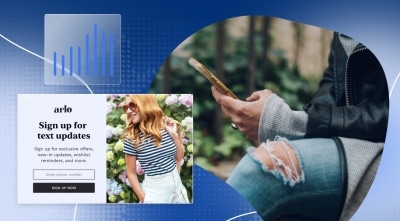Marketing
This Week In Retention: Better Ways to Use Email, Loyalty Programs and Social Media
April 18, 2016

Customer retention doesn’t have to be complicated, and a roundup of recent thinking on the topic shows just how much room there is for differing strategies in retention. Whether you’re intrigued by advances in social listening or improvements to tried-and-true email, the secret is simply to get started–and to recognize a good thing when you’ve got it.
How Starwood Capitalizes on Social Listening
Social listening is supposed to help brands learn what the world is saying about their products, industry, and competitors. Done well, this should be a boon for customer retention. About 26 percent of brands are using their marketing analytics tools for this purpose, according to December 2015 VB Insights report on marketing analytics.
A recent eMarketer report provides a few examples of what “done well,” might mean. Southwest Airlines runs its own so-called Listening Center to learn “not only…what customers think about certain things that we’re doing, but…to compare what they think about our competitors,” says Ashley Mainz, the company’s social business manager.
Starwood Hotels and Resorts Worldwide takes it a step further. Starwood uses social listening to personalize messaging to repeat customers who have stayed at least 100 nights at one of its properties in one calendar year. The company targets their “listening” toward these loyal customers, follows their conversations, and sends them personalized messages. The goal: enticing loyal customers to pick up these messages and broadcast them to their own audiences.
The Simplest but Most Overlooked Tool for Customer Retention
This has got to be the most straightforward strategy for customer retention, ever: Answer those customer service emails. Yet one in three companies fall down on this simple task, according to a 2016 report from SuperOffice, which surveyed the customer service habits of 250 global companies.
It gets worse: Only 66% percent of companies acknowledge receipt of customer emails, and only 8% follow up to see if customers are happy with the responses they get.
“For retailers, the findings point to weak link that should be one of their strongest assets: the potentially giant role of relatively inexpensive email as a form of engagement,” writes Bryan Pearson, president of loyalty marketing firm LoyaltyOne.
According to the report, the fixes are simple:
- Answer customers when they email, even if it’s just to say that you’re working on the problem.
- Make it easy for customers to find your contact information.
- Don’t use impersonal, one-line responses. Instead, write replies that broadcast empathy, efficiency and sincerity.
Another Reason To Keep Those Loyalty Program Members Happy
If you have any doubt that customer retention, and loyalty programs in particular, can have a meaningful impact on your business, consider for a moment the recent saga of Starbucks. As recently as the end of last year, Starbucks credited its loyalty program with allowing it to surpass its revenue estimates.
Yet on February 22, Starbucks said it would make changes to its loyalty program to reward members for the amount they spent, rather than the number of times they visited a Starbucks store. Someone who had been sliding by on tall black coffees would now have to spend $62.50 to get a free drink, compared to just $24 under the old program. Starbucks loyalists howled; Dunkin Donuts unveiled its own loyalty program aimed at encouraging defections.
Then, on April 12, the day the changes went into effect, Deutsche Bank analyst Brett Levy downgraded Starbucks from buy to hold, citing, in part, the effect of changes to the loyalty program. Starbucks shares promptly dropped 4.2 percent.
Starbucks, which doesn’t often respond to such criticism, told CNBC’s Jim Cramer the downgrade was the work of a new, junior analyst who hadn’t yet visited the company’s headquarters. Levy may not have visited Starbucks’ headquarters – but it’s a fair bet that most of the company’s loyalty program members haven’t, either.
In customer retention, as in so many other things, it seems like that old saying really does apply: Do unto others…
—Kristine Lowery, Content Marketing Manager
The State of Brand Loyalty in the U.S. in 2023
Related



